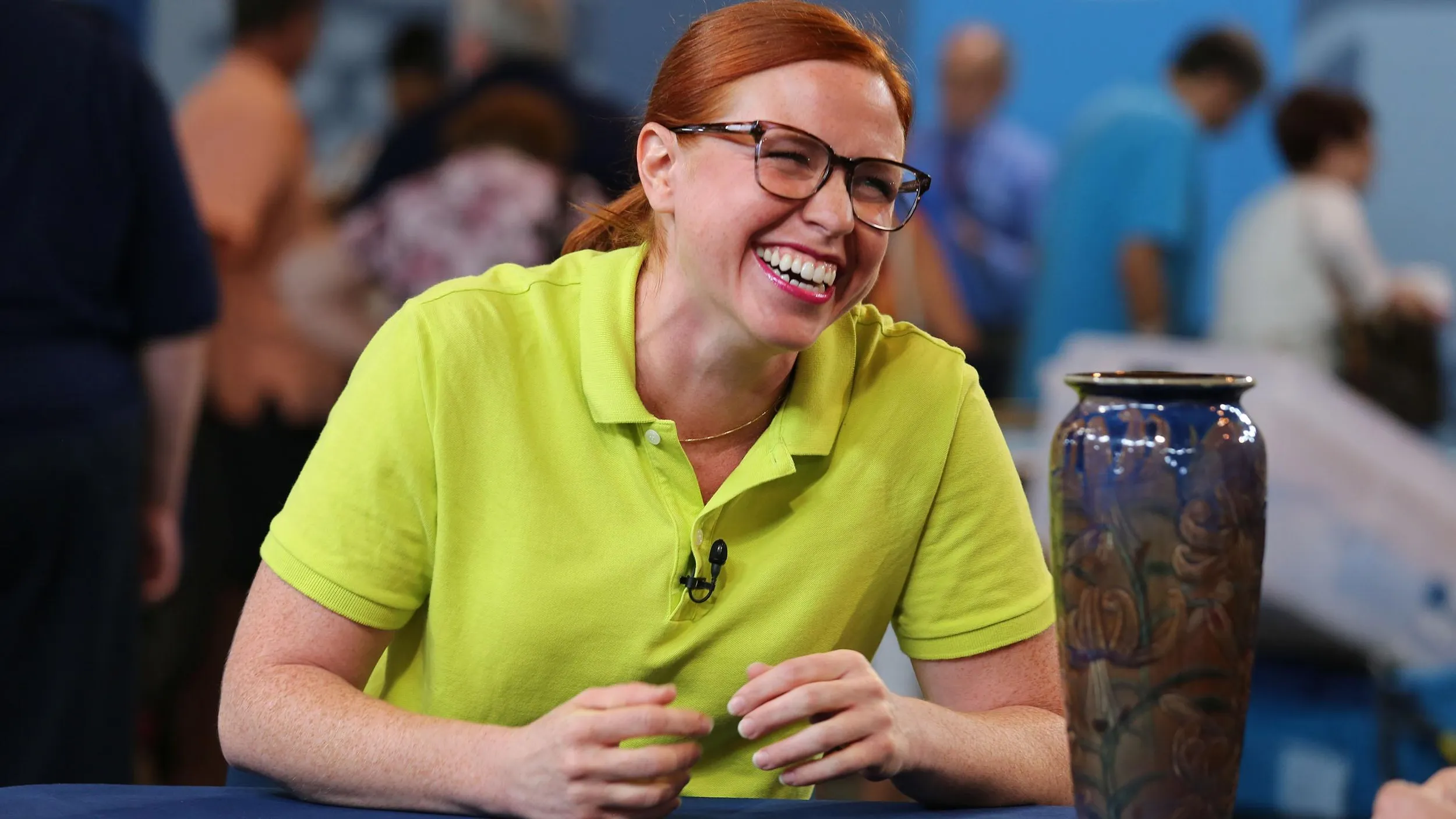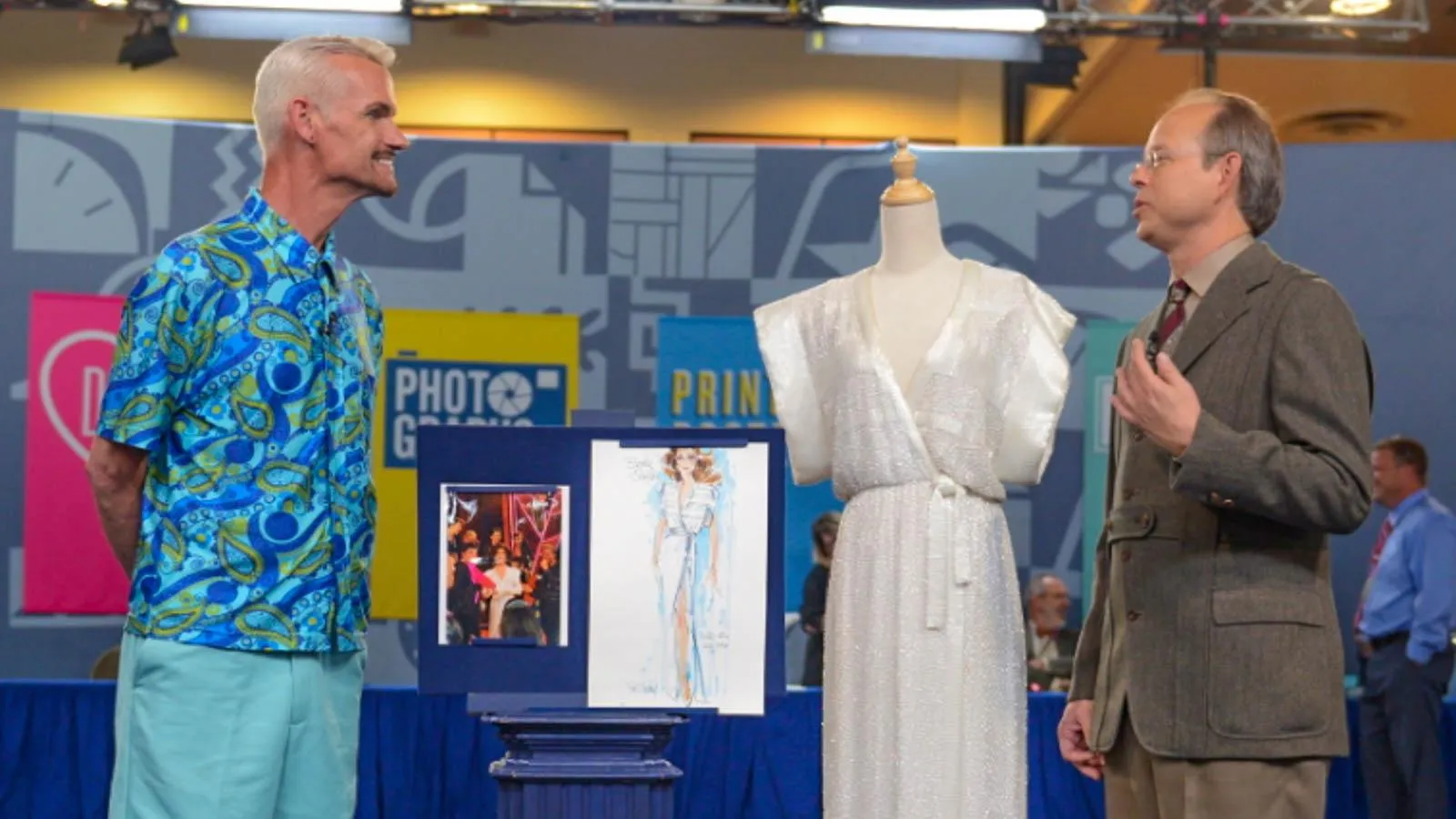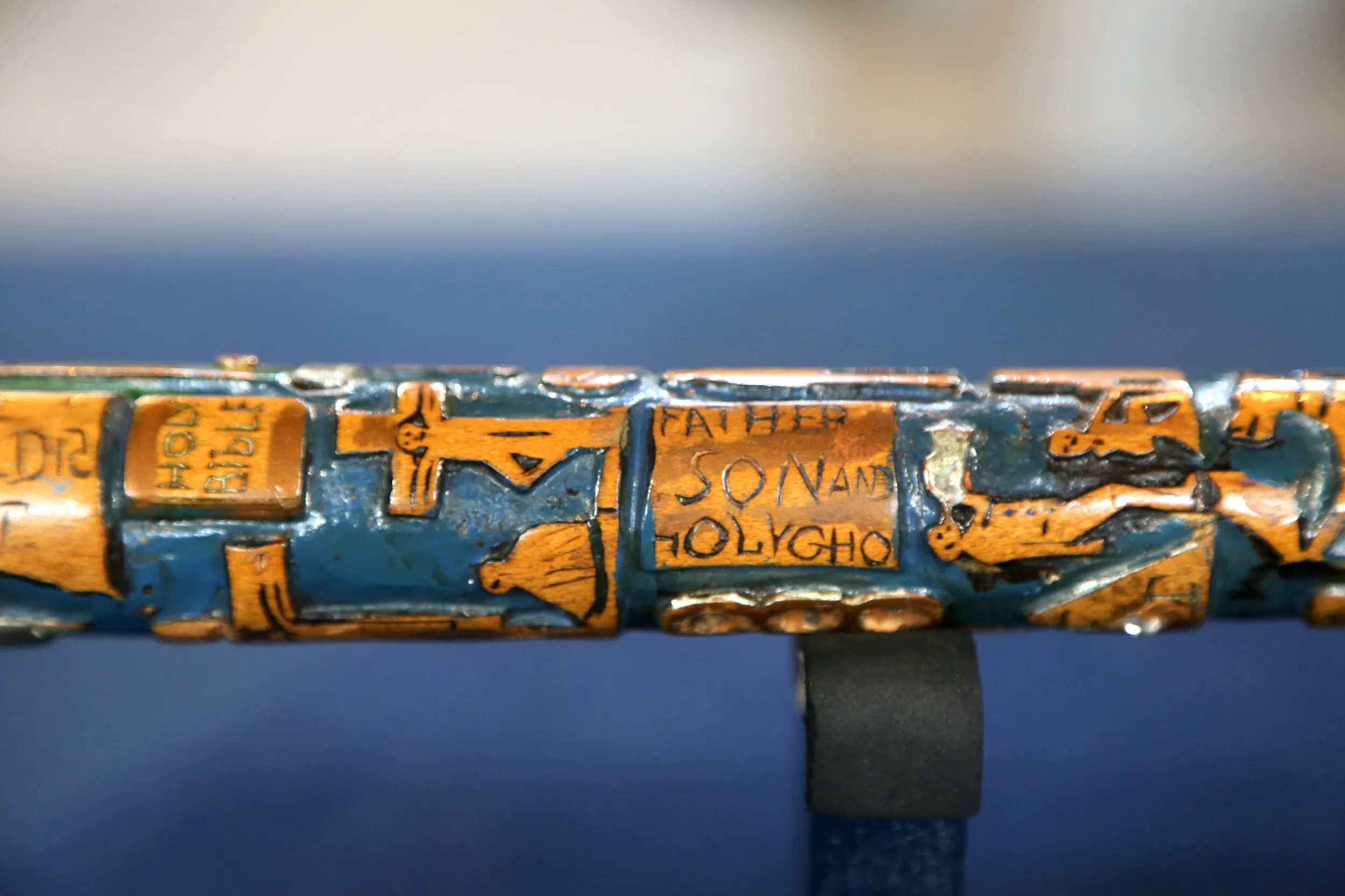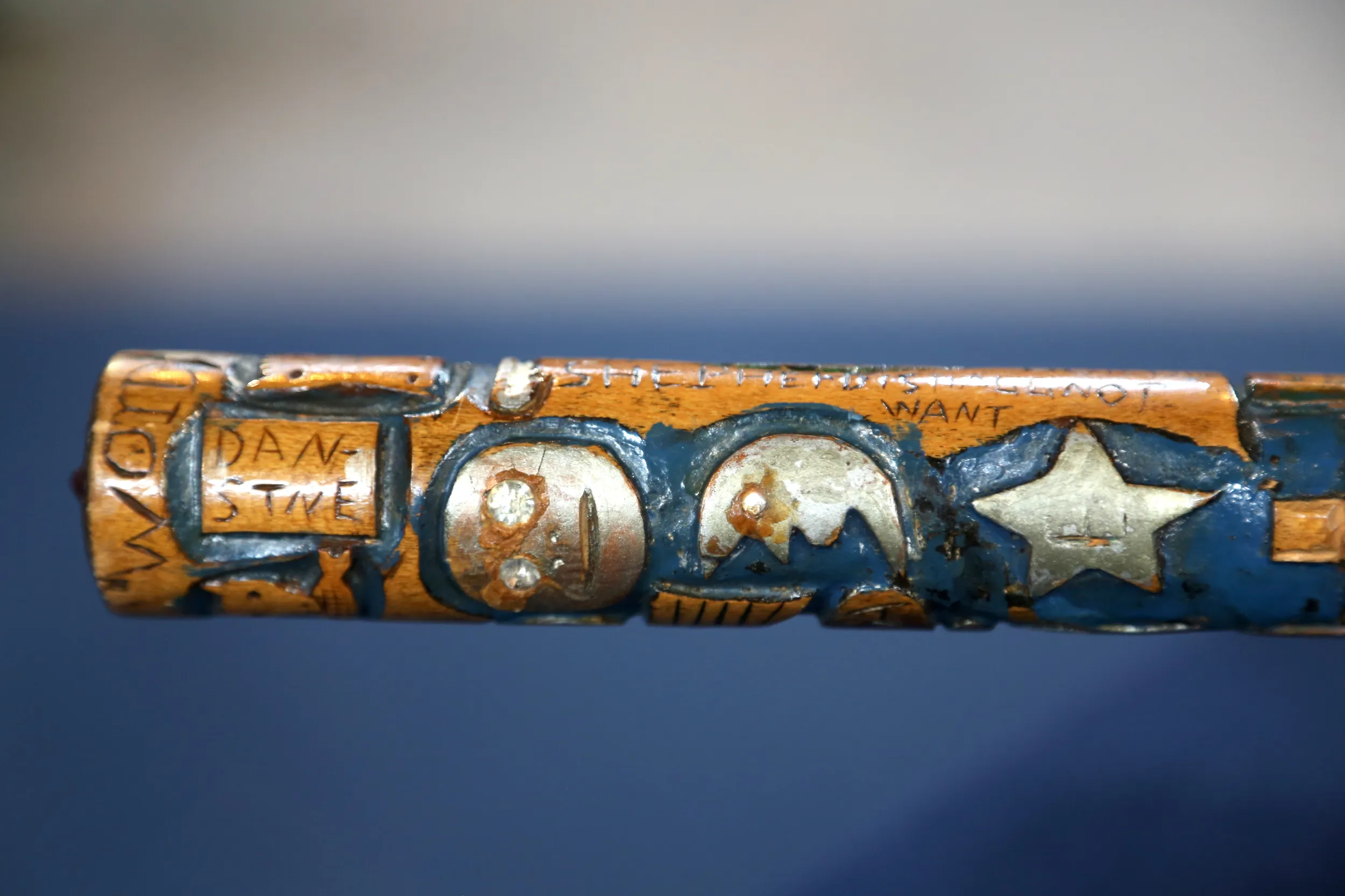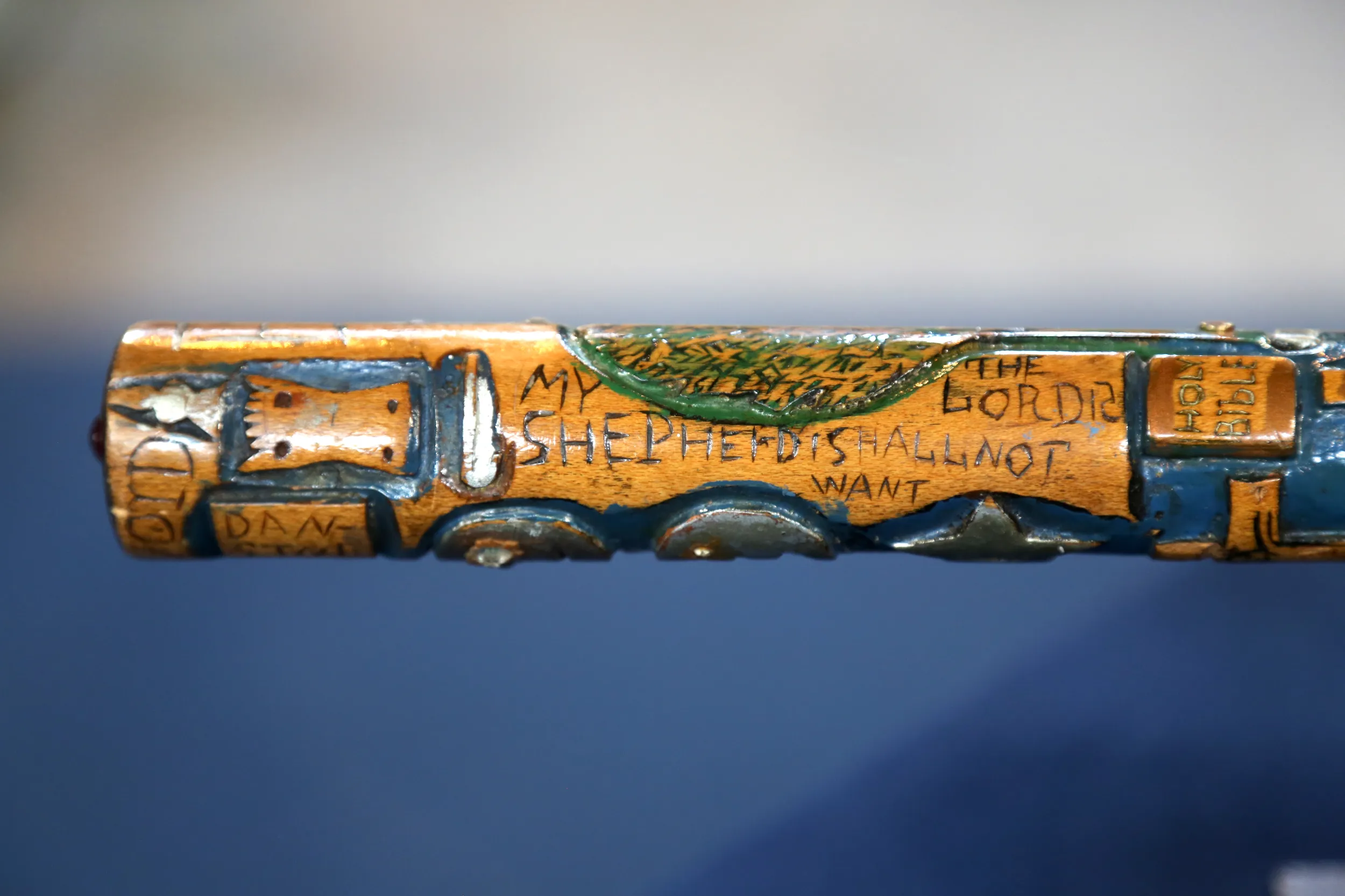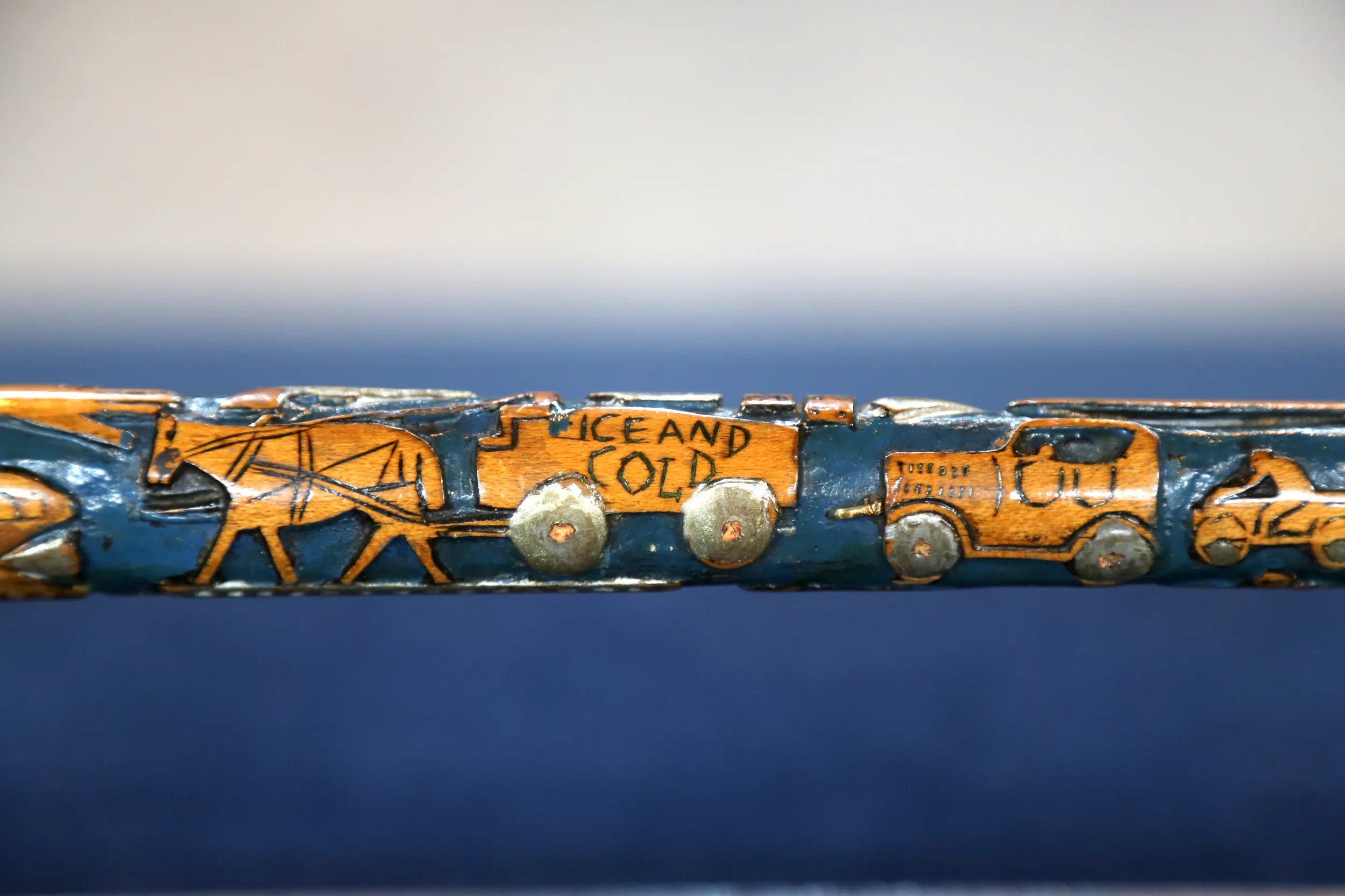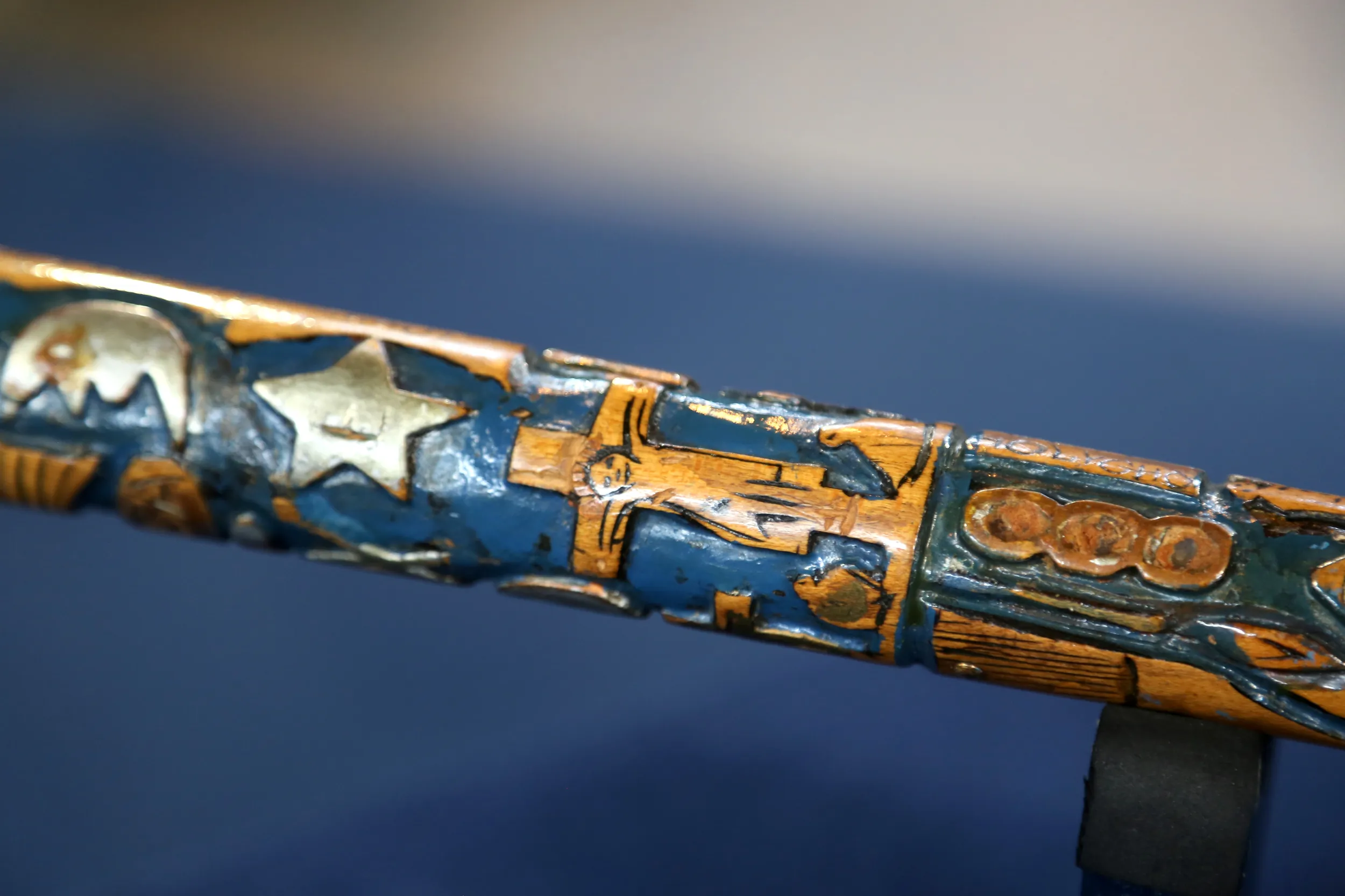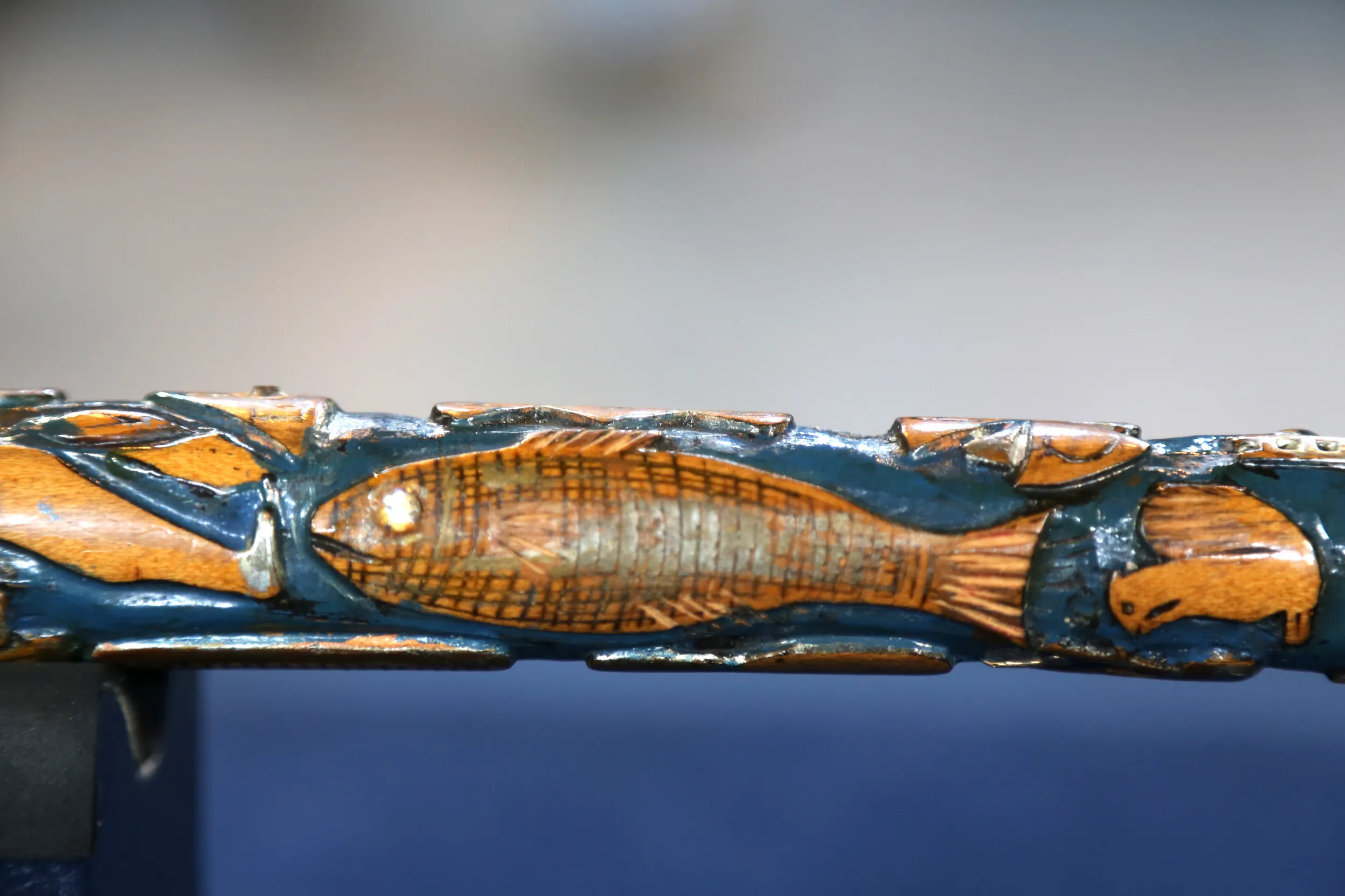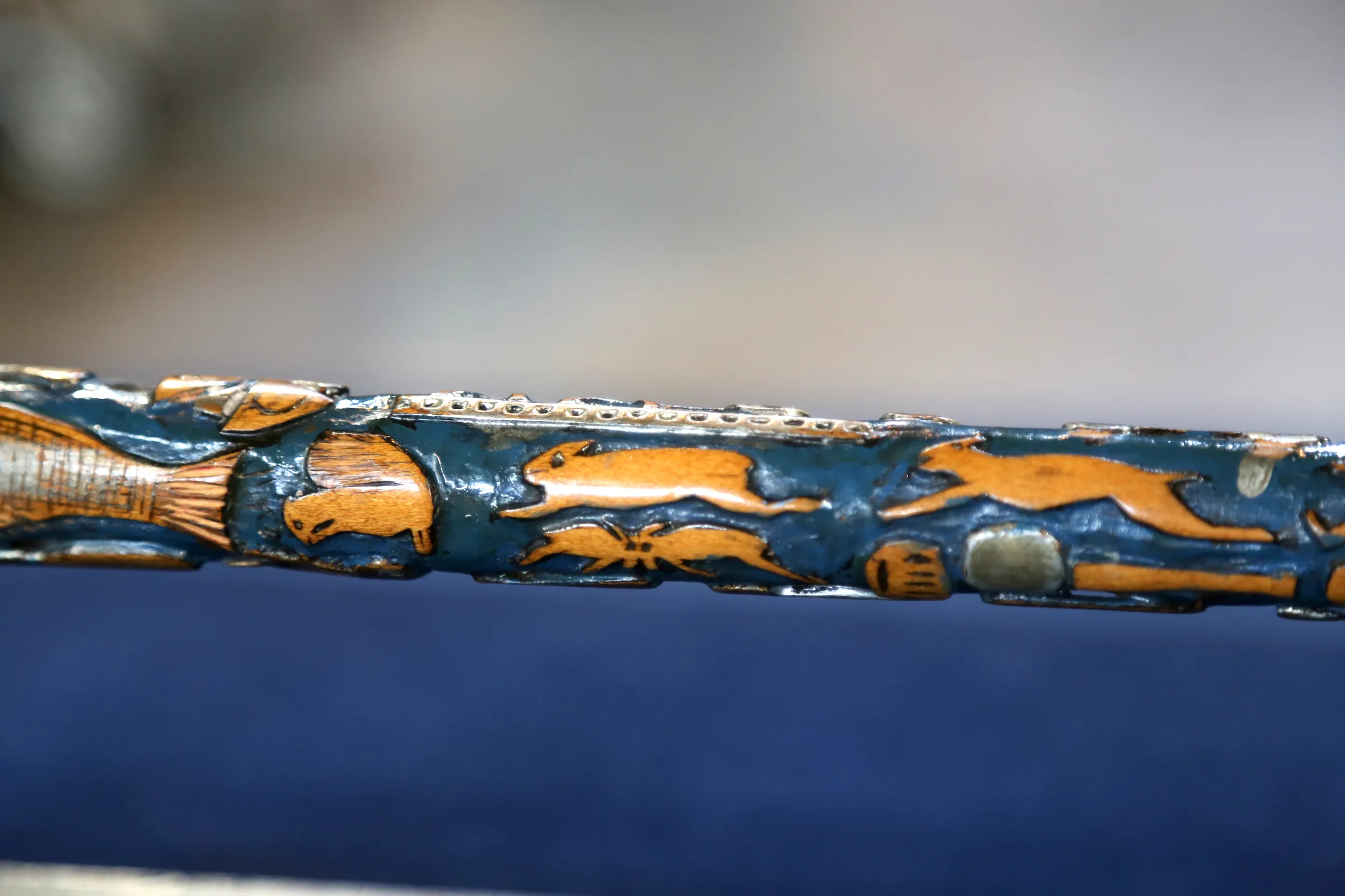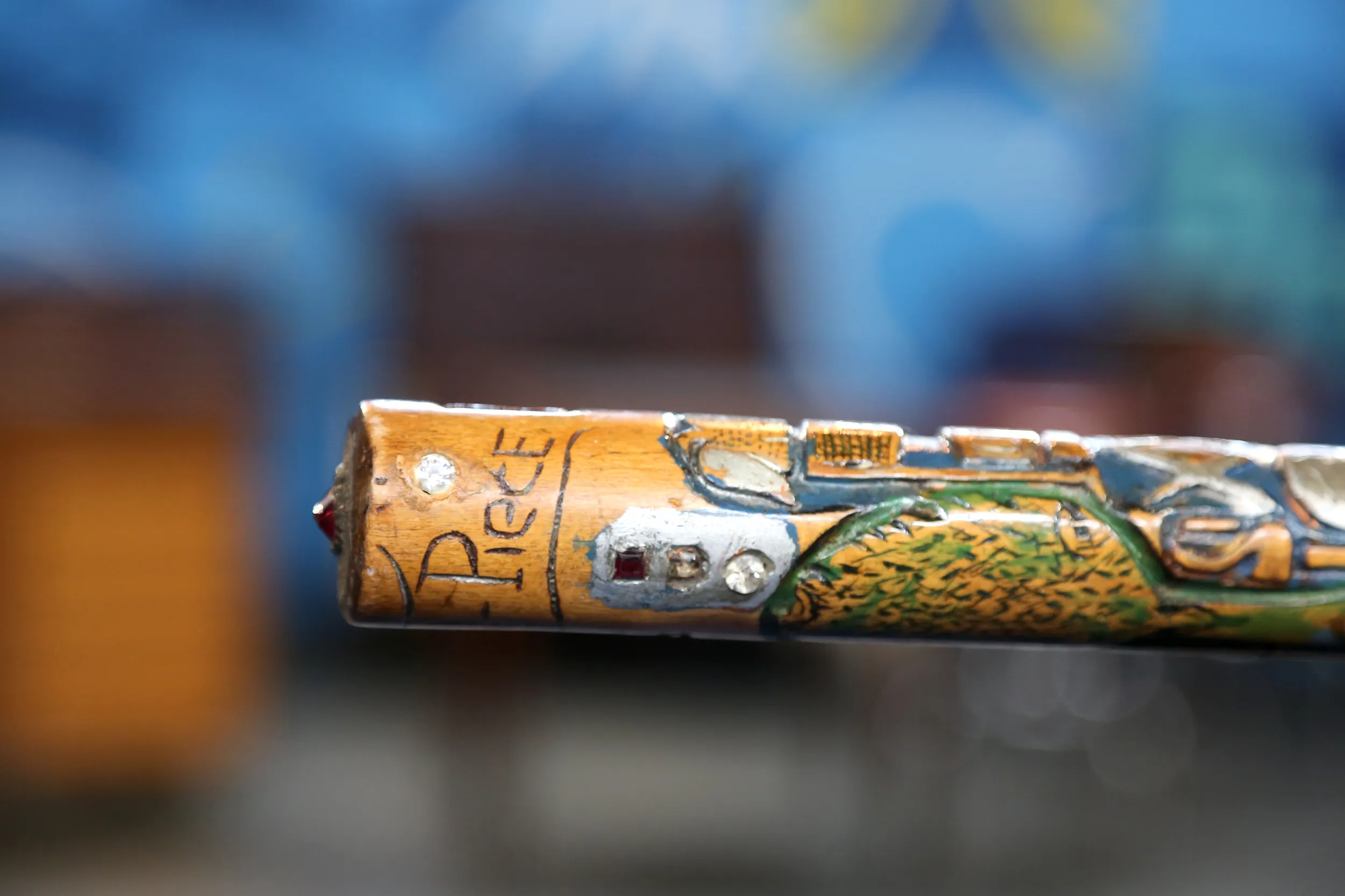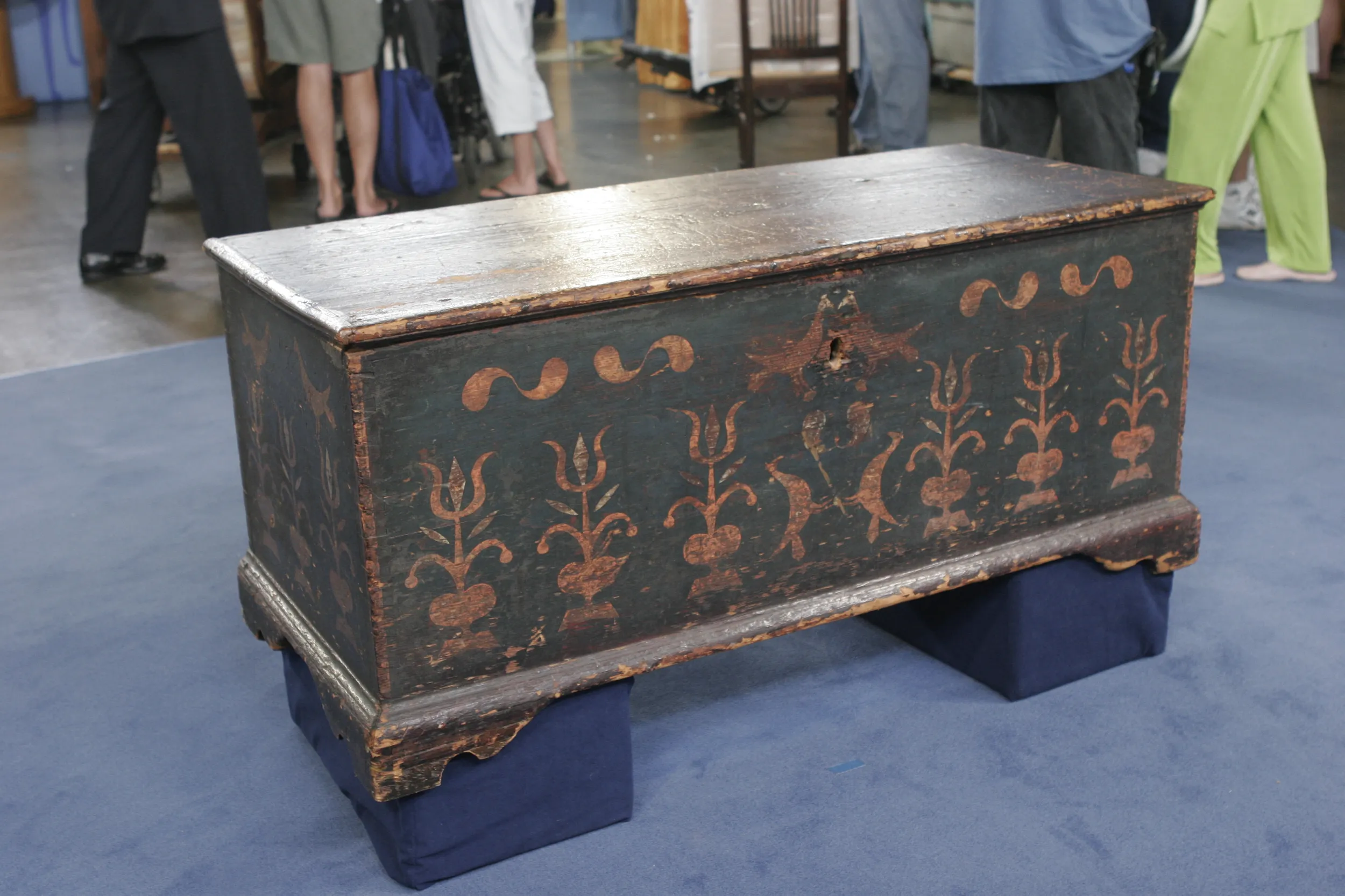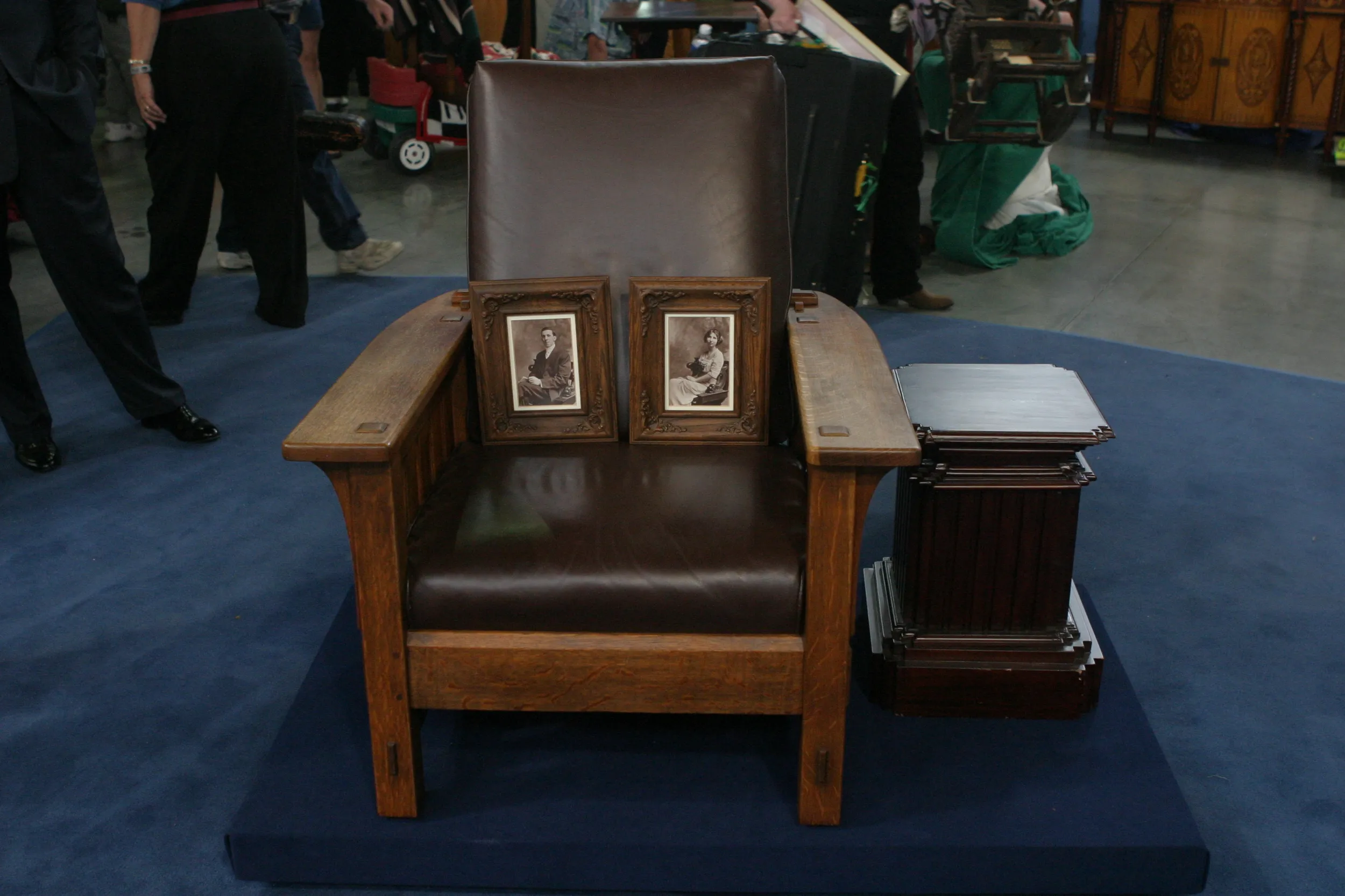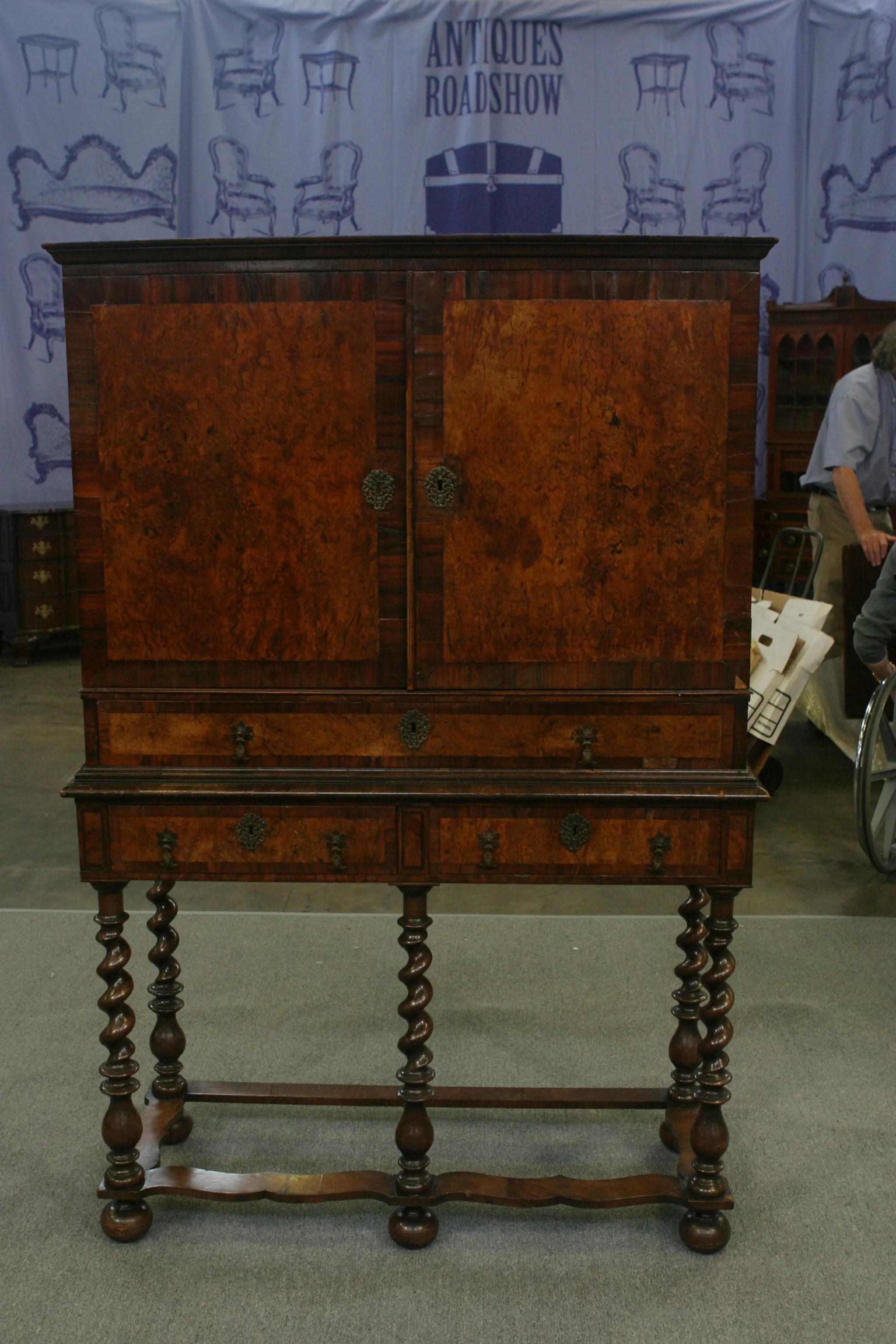GUEST: My grandfather had actually two occupations. One is a barber and one is a wood carver. He took time in between shaves and customers to whittle, which is what he called it. He started with little animals and making zoos for his wife. And as he carved them for his wife, he began to make bigger objects. This here represents one of his items called "the preaching stick."
APPRAISER: Your grandfather was Elijah Pierce?
GUEST: He was actually my father's father.
APPRAISER: And his barber shop was in Columbus?
GUEST: In Columbus, Ohio, mm-hm.
APPRAISER: Ohio. And was he well-known within the neighborhood as—
GUEST: Oh, definitely. Children, adults, especially those he cut their hair...
APPRAISER: Yeah.
GUEST: ...also knew a lot about him. And then being a preacher, they knew about him in the church.
APPRAISER: It was something that he used in preaching, is that right?
GUEST: When he needed to tell a story to those he was cutting hair, he would pick something on that...
APPRAISER: Right.
GUEST: ...or he would use it for his sermons on Sunday as well.
APPRAISER: Right.
GUEST: You'll see his brush for shaving, the cup, the comb and brush. Back in those days, they had the ice trucks. He was highly religious, so you will see...
APPRAISER: Yes.
GUEST: ...the cross and the two thieves on each side of the cross on there.
APPRAISER: Well, it is a remarkable piece...
GUEST: Thank you.
APPRAISER: ...of African American art.
GUEST: American history.
APPRAISER: It speaks to his personal narrative and his religious fervor and spirit. So it's all kind of present on this preaching stick. In looking through the books, in which this piece has been illustrated and exhibited, the consensus seems to be that it was carved somewhere around 1950. For a long time, these pieces have been thought of as American folk art.
GUEST: Correct.
APPRAISER: There is now enormous interest in the artwork of self-taught, African American artists, because in this particular category, the expression and the intensity of what is depicted on these works of art is really central to the maker's being. The highest price for a piece of work by Elijah Pierce is $87,500.
GUEST: Okay.
APPRAISER: The auction estimate for this work would be somewhere in the vicinity of $15,000 to $20,000.
GUEST: Okay.
APPRAISER: If it were to be sold at auction...
GUEST: Sold...
APPRAISER: ...which we know is not going to happen.
GUEST: No.
APPRAISER: For insurance purposes, I would say, $40,000 or $50,000.
GUEST: Okay.

